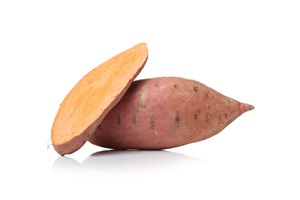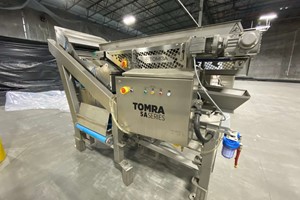A groundbreaking study led by the University of Illinois Urbana-Champaign has unveiled a revolutionary approach to assessing the quality of sweet potatoes using advanced technology and explainable artificial intelligence (AI). This pioneering research, published in Computers and Electronics in Agriculture, promises to significantly enhance the efficiency and accuracy of sweet potato quality evaluation, catering to the demands of both producers and consumers alike.
Sweet potatoes have long been celebrated for their delectable taste and nutritional richness, making them a staple in cuisines worldwide. However, ensuring consistent quality across batches has posed challenges for producers and processors. Traditional quality assessment methods rely on labor-intensive laboratory analyses, often yielding delayed results and limited sampling. Recognizing the need for a more efficient and comprehensive approach, researchers embarked on a journey to integrate hyperspectral imaging and explainable AI into the evaluation process.
Lead by Assistant Professor Mohammed Kamruzzaman from the Department of Agricultural and Biological Engineering (ABE), the interdisciplinary team collaborated with researchers from across multiple states, including Mississippi, North Carolina, Michigan, and Louisiana. Their collective efforts aimed to address critical aspects of sweet potato quality, focusing on three key chemical attributes: dry matter, firmness, and soluble sugar content (degree brix). These attributes not only influence market prices but also determine suitability for various consumer and processing purposes.
The heart of the study lies in the utilization of visible near-infrared hyperspectral imaging, which enables rapid and non-invasive assessment of sweet potatoes. By capturing images from multiple angles, researchers obtain spectral data that unveil crucial insights into the distribution of desired attributes within the tuberous root vegetable. Through meticulous analysis, key wavelengths are identified, facilitating the development of detailed color maps that visually depict attribute distribution.
While hyperspectral imaging has gained traction in agricultural and food processing research, its integration with machine learning presents challenges due to its often opaque nature. To overcome this limitation, the team pioneered the application of explainable AI, offering transparency into the underlying processes of the predictive algorithms. Doctoral student Md Toukir Ahmed, lead author of the paper, underscores the significance of this approach in demystifying the complex interplay between input data and output predictions.
The implications of this research extend beyond the realm of sweet potato assessment. By deciphering the inner workings of machine learning algorithms, industry professionals and researchers gain invaluable insights into the predictive power of different features, enabling more informed decision-making. Ultimately, this translates into a steady supply of higher-quality products for consumers.
Looking ahead, the multi-university collaboration aims to translate their findings into practical tools for processors. The development of a scanning tool capable of swiftly and accurately evaluating sweet potato batches is underway, with the potential for future integration into consumer-facing applications, such as mobile apps for in-store quality assessment.
This pioneering work, funded by the U.S. Department of Agriculture Agricultural Marketing Service, marks a significant milestone in agricultural research. As stakeholders across the food industry embrace these cutting-edge advancements, the journey towards enhanced quality assessment in agriculture takes a decisive leap forward.
morningagclips.com














